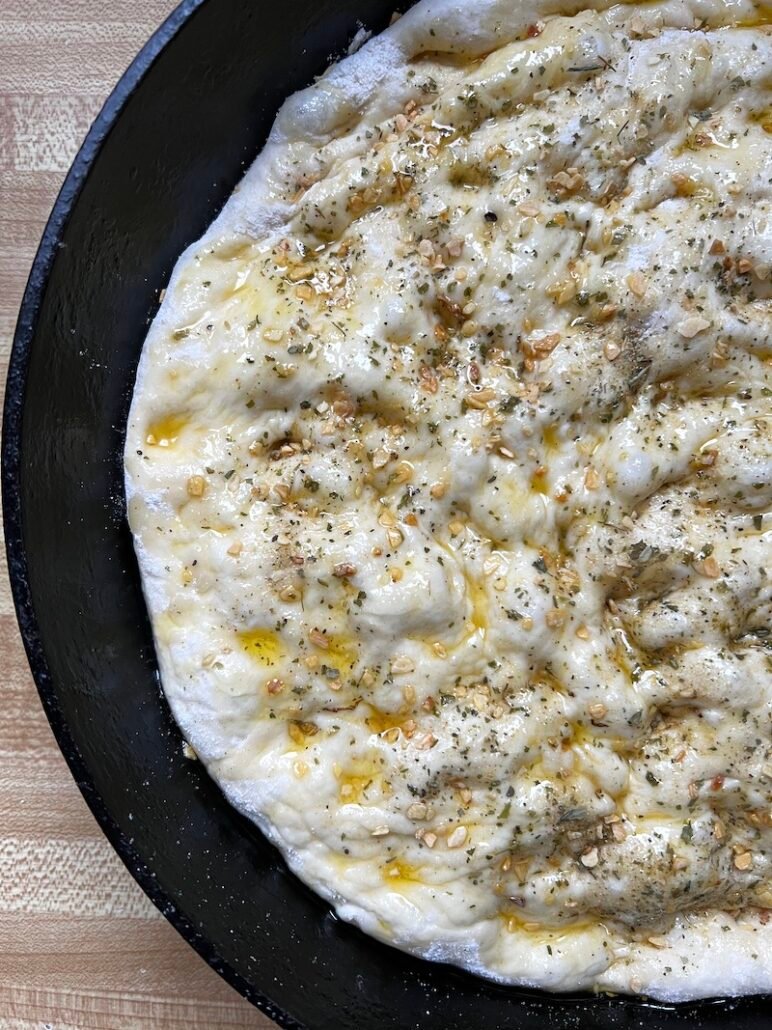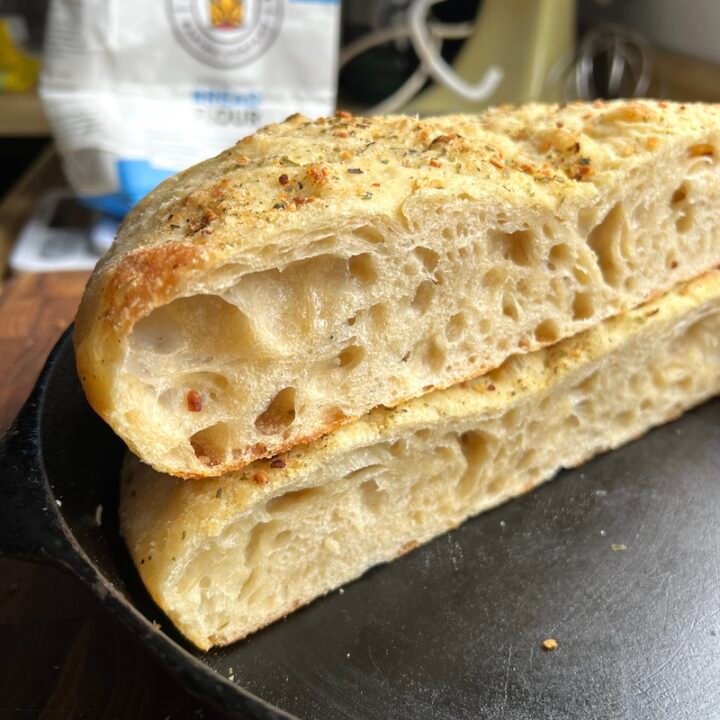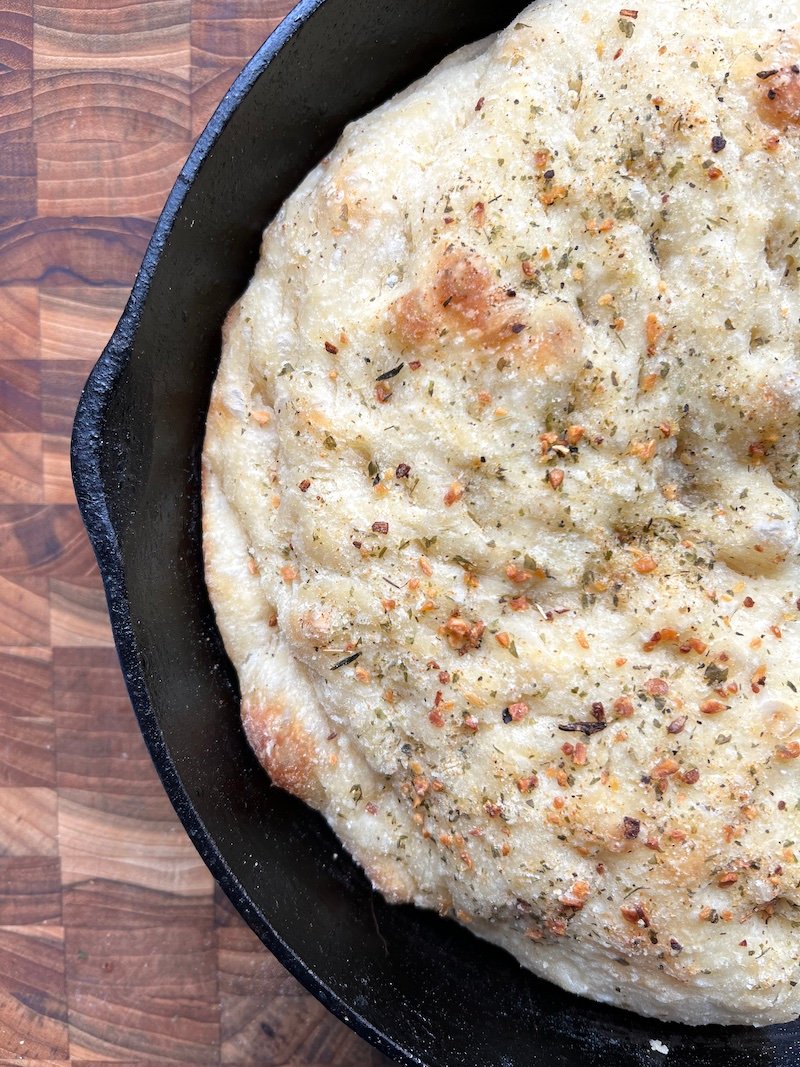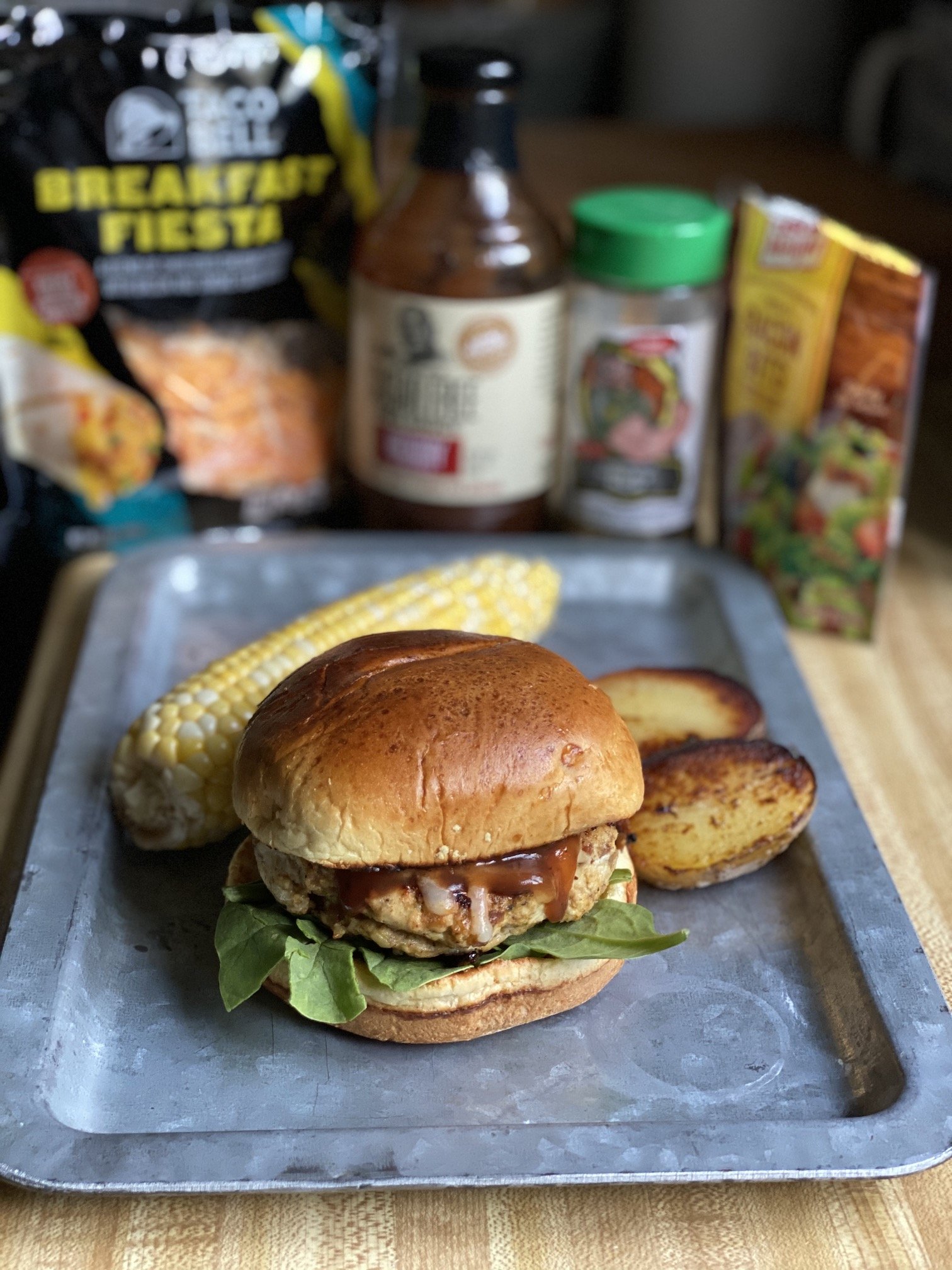Next up on my sourdough adventure is this sourdough focaccia bread.
Truth be told, until I met my Italian (well, he was half Italian half French Canadian, but never accepted the french part!), I had never heard of focaccia bread.
My first attempt to make it was in 2010 – you can check out that post here. Please ignore the awful food photography in that post – ha!
For the sourdough starter, I followed The Clever Carrots method. My only substitution on both recipes that I used was that I used unbleached all-purpose flour. Lots of recipes called for rye flour, or whole wheat flour, and I just didn’t see myself using those flours for anything else, so I am sticking with unbleached all-purpose flour.
Note: unbleached flour is a must for sourdough starter. I have no idea why, but every recipe I found online and watching YouTube, unbleached flour was always used. I bought twenty pounds of unbleached at Costco for under $16.00.

For the dough recipe, I used Alexandra’s Kitchen recipe, but turned my loaf into focaccia bread. In hindsight, I wish I would have used a bigger vessel for the bread, because I lost a lot of the dimples when it baked, but this was still delicious!

Sourdough Focaccia
The base of this sourdough focaccia is from Alexandra's Kitchen. The base of my sourdough is from The Clever Carrot.
Ingredients
- For the sourdough starter: I only use unbleached all-purpose flour for both my starter and bread
- 60 grams unbleached all-purpose flour
- 60 grams water
- For the bread:
- 100 g sourdough starter
- 375 grams warm water
- 500 grams unbleached all-purpose flour
- 12 grams salt
- 1 tablespoon good olive oil
- seasonings of choice
Instructions
- My sourdough starter took me THREE WEEKS before it was active enough to make anything with. Follow The Clever Carrot's instructions on sourdough starter - that's what I followed.
- To make the bread: whisk the starter and water together. Stir in flour and salt and mix just until combined. Cover with damp towel and let rest for 30 minutes.
- For the next two hours, every 30 minutes, stretch and fold the dough 4 times. Each time you stretch and fold you'll see that the dough becomes a bit more glossy and less sticky.
- After the last stretch and fold, cover with plastic wrap and refrigerate overnight.
- Heat oven to 400 degrees. Slowly release the dough from the bowl, by holding the bowl upside down - you want gravity to pull the bread out so you don't get rid of any air bubbles.
- Drizzle 1/2 tablespoon of oil in the bottom of a cast iron skillet, spreading around to coat the bottom of the skillet. Add dough. Add remaining 1/2 tablespoon of oil over the top, and using your fingers, make dimples into the dough. Add seasoning of choice.
- Bake for 25-30 minutes, or until golden brown on the sides and bottom. Let cool 60 minutes before slicing.
Notes
Alexandra's recipe called for between 50-100 grams of sourdough starter, I went with 100 grams.
If you make this loaf 12 servings, each serving is 5 WW points. However, I suggest just slicing it, weigh that piece and enter it into the WW app that way. Either way, it's delicious! Click here for the WW tracker.
Nutrition Information:
Yield: 12 Serving Size: 1Amount Per Serving: Calories: 254Total Fat: 2gSaturated Fat: 0gTrans Fat: 0gUnsaturated Fat: 1gCholesterol: 0mgSodium: 434mgCarbohydrates: 51gFiber: 2gSugar: 1gProtein: 7g

How do you count the weight watcher points for focaccia bread?
Because the serving size can vary so much, I simply look up focaccia bread in the WW app, and weigh my bread and simply add that to the app. See the photo below:

The world of sourdough is a journey, but it’s a life lesson in and of itself. Learning how to make sourdough bread is a lot like the journey of weight loss – it’s a slow and deliberate process that demands both time and patience. Just like cultivating a sourdough starter requires a careful balance of flour, water, and time for fermentation, shedding those extra pounds involves a mix of balanced nutrition, exercise, and consistency. Much like waiting for the dough to rise, it’s crucial not to get disheartened by slow progress on the scale. In both cases, success comes to those who stick with it, resist the urge to throw in the towel, and understand that the journey is as important as the destination. Whether you’re waiting for your sourdough to develop its tangy flavor or working towards a healthier you, the key is to savor the small victories and keep feeding that determination. After all, the most flavorful outcomes are often the result of a well-nurtured process, whether it’s a perfectly baked loaf or a fitter, healthier version of yourself.




